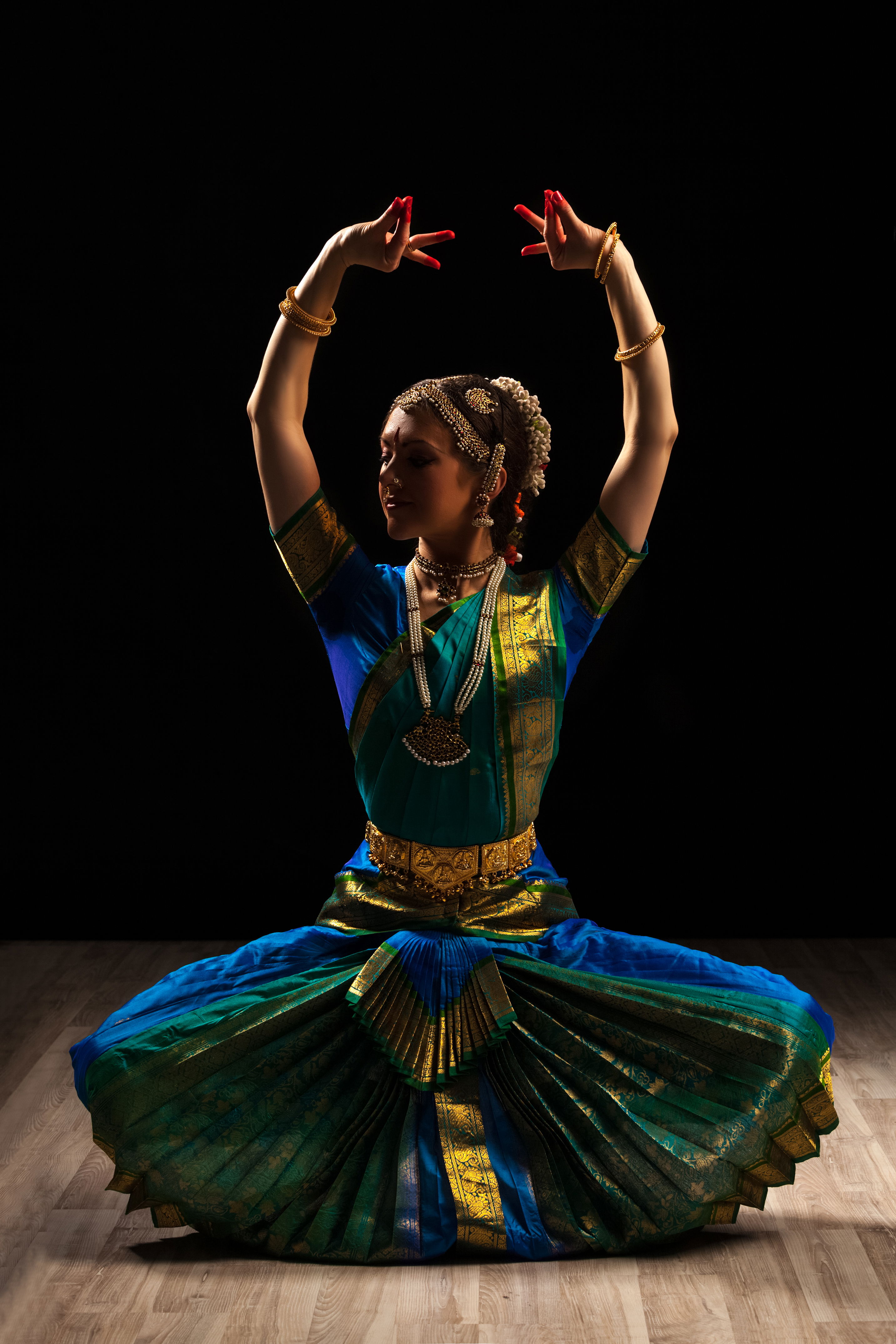Bharatnatyam
Indian Classical Dance

Bharatanatyam: The Divine Dance of India Meta Description: Discover Bharatanatyam, one of India's oldest classical dance forms and is widely considered the "mother" of Indian classical dance. Explore its history, key elements, expressive gestures, and captivating performance structure. A journey into divine storytelling. An Introduction to Bharatanatyam Bharatanatyam is more than just a dance; it is a profound and ancient art form that embodies the very essence of Indian culture, spirituality, and storytelling. Originating over 2,000 years ago in the temples of Tamil Nadu, South India, it was originally known as Dasi Attam and performed by temple dancers (Devadasis) as a sacred offering to the gods. Today, it is one of the most popular and widely practiced Indian classical dances across the globe, celebrated for its grace, precision, rhythm, and expressive power. The Meaning Behind the Name The name "Bharatanatyam" is often broken down into its constituent parts, each representing a key aspect of the dance: "Bha" for Bhava (Emotion, expression) "Ra" for Raga (Melody, musical scale) "Ta" for Tala (Rhythm, beat) "Natyam" meaning Dance Thus, Bharatanatyam is the dance that seamlessly unites expression, melody, and rhythm. Key Elements of Bharatanatyam The beauty of Bharatanatyam lies in its intricate and codified structure. It is built upon three core pillars: Nritta (Pure Dance): This is the abstract, rhythmic aspect of the dance. It focuses on pure movement, patterns, and sculpturesque poses. The emphasis is on visual beauty, precise footwork, and complex rhythmic patterns, devoid of any story or emotion. The audience appreciates the dancer's technical skill and grace in this segment. Nritya (Expressive Dance): This element combines rhythm with expression. It uses a sophisticated language of hand gestures (mudras or hastas), facial expressions (abhinaya), and body movements to interpret the lyrics of a song (sahitya) and convey a story or emotion (bhava). Natya (Dramatic Element): This refers to the dramatic aspect, or the element of narrative. It is the combination of Nritta and Nritya to present a full-fledged story, often drawn from Hindu mythology, depicting the lives of gods and goddesses like Shiva, Vishnu, Krishna, and Parvati. The Language of Gestures: Mudras and Abhinaya A defining feature of Bharatanatyam is its elaborate vocabulary of gestures. Mudras (Hand Gestures): There are 28 single-hand gestures (Asamyukta Hastas) and 24 double-hand gestures (Samyukta Hastas). Each mudra can have multiple meanings. For example, the Mayura (peacock) hand gesture can represent a peacock, a bird, or even eyes. Abhinaya (Facial Expression): The dancer's face is a canvas of emotions. The eyes and eyebrows are used with extraordinary skill to express the nine primary emotions (Navarasa)—love, laughter, compassion, anger, courage, fear, disgust, wonder, and peace. The Traditional Performance Structure (Margam) A traditional Bharatanatyam solo debut, or Rangapravesham, follows a specific sequence called a Margam, designed to showcase the dancer's mastery of both technical and expressive aspects. Alarippu: An invocation piece. A short dance of offering, symbolizing the awakening of the body and soul to the divine. It starts with simple movements and gradually builds in complexity and speed. Jatiswaram: A pure dance (Nritta) piece. It has no abhinaya (expression). The dancer performs a series of intricate footwork patterns and sculpturesque poses set to a musical melody (swaram) and rhythmic syllables (jati). Shabdam: A transitional piece where expressions (abhinaya) are introduced for the first time. The dancer interprets the meaning of the lyrics, which are usually in praise of a deity. Varnam: The centerpiece and most challenging part of the performance. It is a long item that combines complex rhythmic footwork, expressive storytelling, and intense emotional depth. It tests the dancer's stamina, skill, and artistic maturity. Padam: This is the expressive highlight. The tempo slows down, and the focus shifts entirely to deep storytelling and subtle emotion (bhava). The dancer delves into the nuances of the lyrics, often exploring themes of divine love or separation. Tillana: A vibrant and rhythmic finale. It is a pure dance item characterized by fast, energetic movements, captivating rhythms, and joyful poses. It leaves the audience with a sense of exhilaration. Mangalam: The concluding item. A short, simple dance of thanksgiving and peace, offering salutations to God, the guru, and the audience. Costume and Adornment The Bharatanatyam costume is a visual spectacle in itself. Costume: Female dancers wear a beautifully tailored sari, typically made of Kanchipuram silk. It consists of a fitted pyjama-style bottom and a pleated cloth at the waist that unfurls brilliantly during spins and araimandi (half-seated) poses. Jewelry: Dancers wear specific traditional jewelry, including a headpiece (rakodi), earrings, necklaces, armlets, and waistbands. Ankle bells (ghungroos) are essential for articulating the rhythmic footwork. Make-up: The make-up is bold, with highlighted eyes and reddened lips, ensuring the facial expressions are visible even from a distance. The Music and Instruments Bharatanatyam is performed to Carnatic classical music from South India. The orchestra typically includes: A vocalist A mridangam (double-headed drum) A veena (string instrument) or violin A nattuvangam (cymbals) played by the guru who conducts the recital by calling out the rhythmic patterns. Bharatanatyam Today From its sacred origins in temple sanctums, Bharatanatyam has evolved into a globally recognized and respected art form. While it remains deeply rooted in tradition, contemporary choreographers are also using its framework to explore modern themes, ensuring its relevance and dynamism for new generations. It continues to captivate audiences worldwide with its perfect blend of geometric precision, spiritual depth, and profound emotional storytelling.